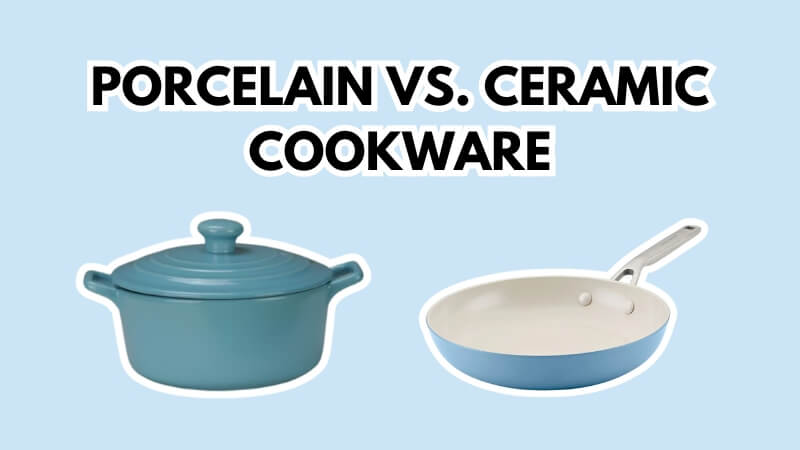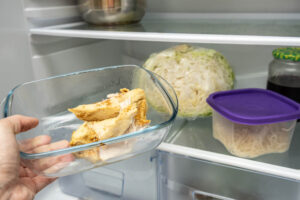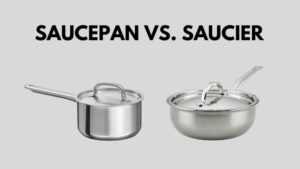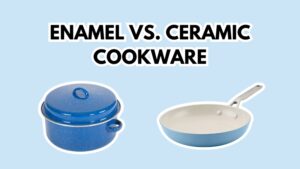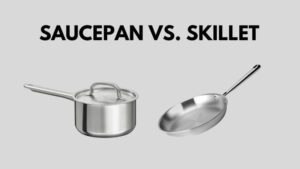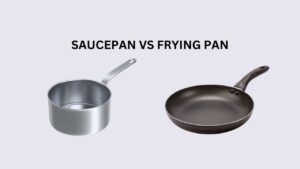When it comes to cookware, the choice between porcelain and ceramic can be confusing. Both materials have gained popularity for their versatility, durability, and aesthetic appeal. But what sets them apart? Whether you are just learning how to cook or have been cooking for a while already, understanding the porcelain vs ceramic cookware differences can help you choose the perfect cookware for your needs. I’m going to share the key distinctions, advantages, and considerations, so you can make an informed decision for your kitchen.
The Main Difference Between Ceramic and Porcelain
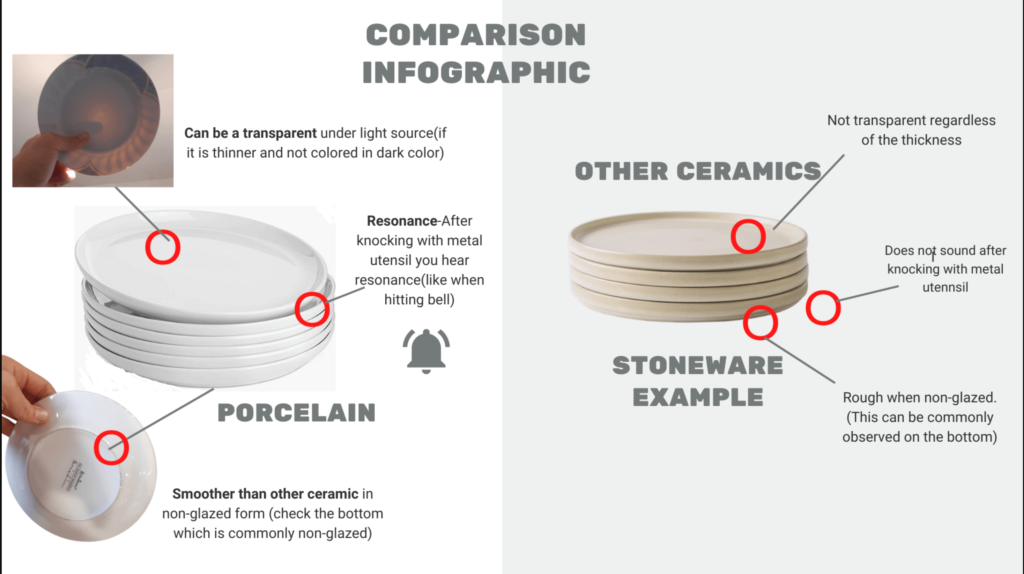
Ceramic cookware is made from clay that is fired at lower temperatures than porcelain (1,000 – 1,150°C ~1800 – 2100°F) and can either be fully ceramic or coated with a ceramic glaze. If not coated, ceramic cookware has an earthy feel. I already experienced how to make a cup with ceramic and it’s an interesting activity that I can make my own cup by myself. I suggest you try one time to feel how relax it is when doing a ceramic.
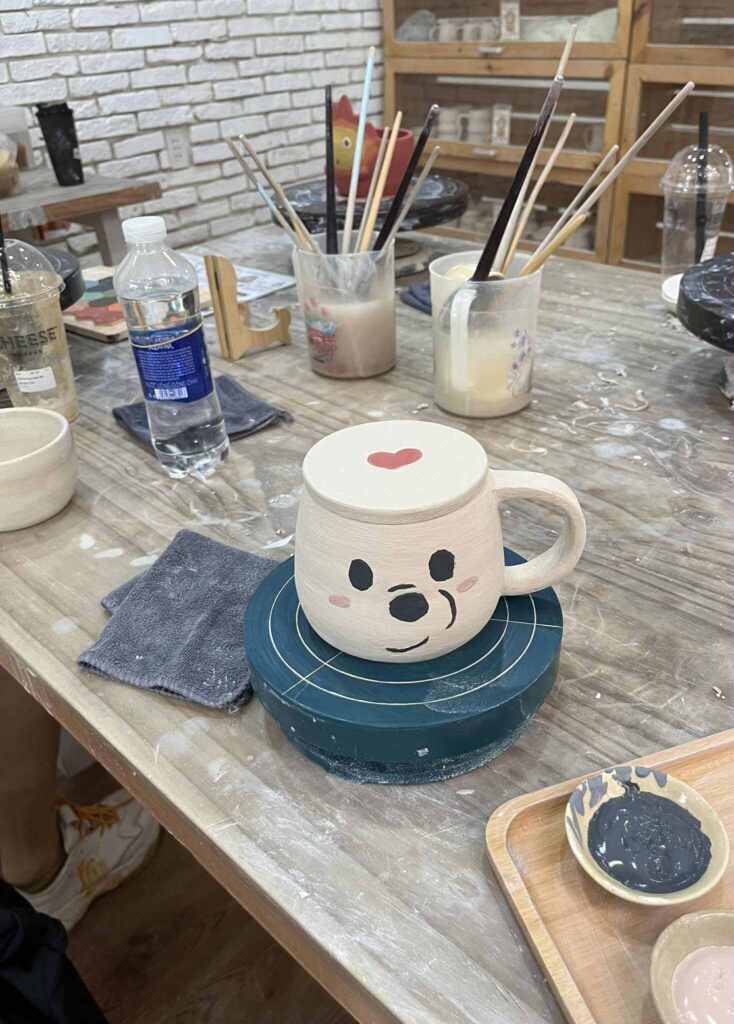
What is porcelain made of? It is made from refined clay and fired at even higher temperatures (1,200 – 1,450°C ~2,200 – 2,600°F). This creates a denser, smoother, and more glass-like finish compared to traditional ceramic.
How does this affect the price?
Creating porcelain involves using refined clay, often mixed with materials like kaolin, and firing it at much higher temperatures than ceramic. This results in a less porous material with a polished finish, which increases its manufacturing cost. The refined appearance and premium feel of porcelain pots and pans further contribute to their higher price tag.
Ceramic cookware is often more affordable because it requires less intensive production methods. Its porous nature and susceptibility to wear and tear under certain conditions make it less expensive than porcelain. Additionally, ceramic cookware’s broader range of styles and finishes, offers budget-friendly options, making it an excellent choice for those looking for quality without breaking the bank.
Other porcelain vs ceramic cookware differences
Porcelain pots and pans are generally less likely to chip, crack, or stain compared to traditional ceramic cookware, making them a great option if you’re a bit clumsy in the kitchen. Ceramic cookware, while still durable, may be more prone to wear and tear under extreme temperature changes. They can also be damaged with heavy use. So, if longevity is a priority, porcelain is often the better choice.
Porcelain cookware tends to be slightly heavier than ceramic due to its denser material. This can affect handling, particularly for larger pots and pans. While some may prefer the substantial feel of porcelain, others may find ceramic cookware lighter and easier to manage, especially when cooking large meals. Personally, I use ceramic for everyday cooking, but when relatives visit, I prefer porcelain since it feels more refined and looks more elegant on the table.
In terms of porcelain vs ceramic cookware maintenance, porcelain cookware is often easier to clean because of its non-porous surface. Food is less likely to stick, and stains can be wiped away with ease. Ceramic cookware, especially if it has a more textured finish, may require a bit more effort to keep clean. Both materials are dishwasher safe, but in my experience, hand-washing is the better option for long-term durability, especially for ceramic, which can fade or become damaged over time.
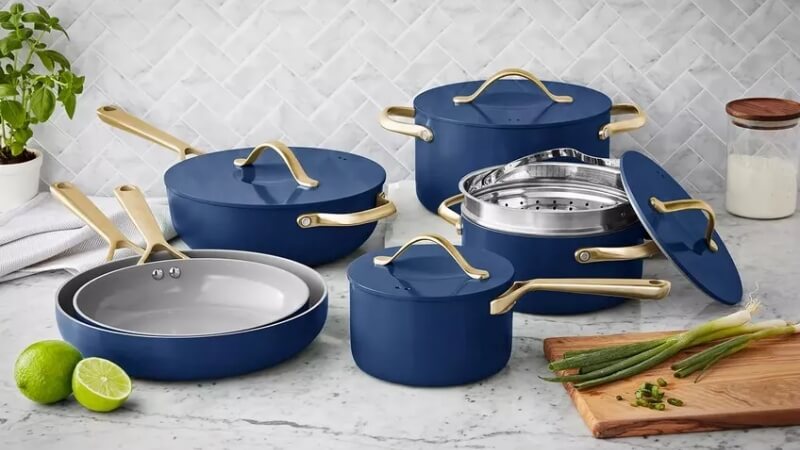
Quality Between Porcelain vs Ceramic Pots and Pans
Porcelain cookware is known for its high quality, especially in terms of durability. The non-porous surface makes it less prone to staining, chipping, and scratching, giving it a longer lifespan with proper care.
Because of its ability to withstand higher temperatures, porcelain is considered a premium material in the cookware world, especially for slow cooking or roasting. However, its heavier weight can be difficult to handle for some.
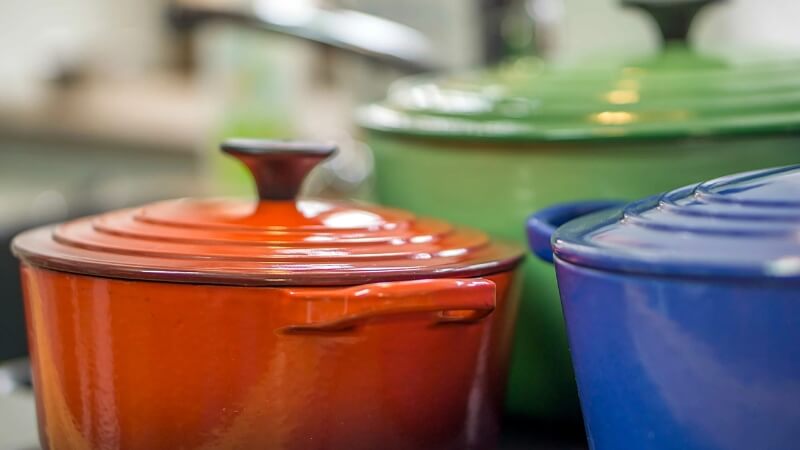
Ceramic cookware is also of high quality, but its durability depends on the specific product. While it generally provides excellent heat distribution, it can be more prone to chipping, cracking, or staining over time.
Ceramic cookware can be excellent for low-to-medium heat cooking, such as simmering or sautéing, but it may not be as well-suited for high-heat cooking or use in the oven at very high temperatures. Despite these limitations, ceramic cookware’s wide range of colors and finishes makes it a popular option for those who want to add personality to their kitchen.Both porcelain and ceramic cookware, however, may contain lead or other heavy metals that can leach into hot food. Hence, I suggest buying the enamel vs ceramic vs porcelain is contaminant-free to be safer.
Which One Should You Buy?
Choose porcelain cookware if:
| Durability and longevity | Porcelain cookware is known for its resilience, with a surface that resists chips, scratches, and stains. If you are looking for cookware that can stand the test of time, porcelain is a great investment. |
| High temperatures | If you often roast, broil, or bake at higher temperatures, porcelain is ideal as it can handle extreme heat better than ceramic. It is perfect for slow cooking and roasting. |
| Polished aesthetic | Porcelain has a refined finish that gives your kitchen a sophisticated look. If you enjoy an elegant kitchen set-up or want cookware that doubles as a serving piece, porcelain is the better choice. |
| Easy cleaning | Porcelain’s non-porous surface makes it less prone to staining and food build-up, so it is easier to clean, even after cooking with sticky or messy ingredients. |
Choose ceramic cookware if:
| Affordable price | Ceramic cookware generally comes at a lower price point. If you are starting out or just need cookware for everyday cooking, ceramic offers great value for the money. |
| Variety of styles | Ceramic cookware comes in many colors, finishes, and designs. So, you can match your cookware to your kitchen decor or express your personal style. |
| Low to medium heat | Ceramic cookware excels at cooking at lower temperatures, making it ideal for dishes like soups, stews, and slow-simmering meals. If you do not do much high-heat cooking, ceramic will perform well. |
Closing Thoughts
Deciding between porcelain vs ceramic cookware comes down to what matters most to you in the kitchen. If you are after durability, porcelain pots and pans are the ideal choice. However, if you prefer affordability, ceramic is a fantastic option.
Both materials have their strengths, and understanding the key differences will help you pick the cookware that best suits your cooking habits. Choose wisely, and enjoy the benefits of your new cookware for years to come.

